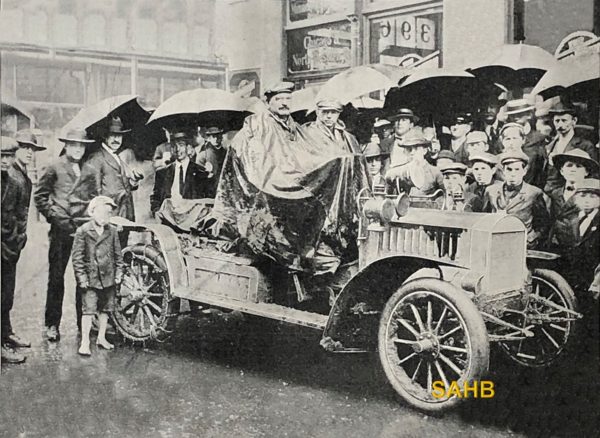
These two men have just made the journey from Chicago to St. Paul on a ‘Tour’ in 1905. Their car, a Lambert, was claimed to have been the first gasolene [sic] car to have reached the destination “through the mud”. As Lambert were always Indiana-based, that St. Paul is probably St. Paul, Indiana (226 miles away) rather than St. Paul, Minnesota (407 miles away). It was still a fine achievement.
In 1904 John W. Lambert invented and patented a friction-drive transmission with a large driving disc behind the engine and a driven friction wheel moving across it to give a theoretically infinite number of forward and reverse ratios. This simple system was also used by several other makers, including Brush, Cartercar, Metz and Simplicity in the USA and GWK in the UK – but all of these came after the Lambert and therefore possibly paid a licence to use the system.
After early unsuccessful experiments from 1900 with a leather disc and iron friction wheel, Lambert discovered that facing the disc with aluminium and the wheel with a type of cardboard gave outstanding performance. The Buckeye Manufacturing Company of Anderson, Indiana made the flat-twin engines and friction drives for Lambert and had an advertising slogan of ‘The Car with a Thousand Speeds’ for the Lambert automobiles it produced during the early part of the 1900s.
Lambert’s claims for this transmission were many: “Perfectly Noiseless – Greatest Control – Virtually positive – Always most Efficient – Efficiency Never Reduced – No Attention Required – Unlimited Number of Speeds – Guaranteed not to Exceed an Expense of $2.50 per year.”
Lambert first used his transmission on the Union car from 1902 to 1905, made in Union City, Indiana. He then moved the factory to Anderson, where Buckeye had always produced the engines and transmission, and built Lambert cars there from 1905 to 1916. Lambert also made trucks, fire engines and tractors, all with the same friction drive. This was not a small operation. By 1915 Lambert were producing around 3,000 cars and trucks per year. The factory converted to military production in World War I and no more Lambert vehicles were built after the war.
Image courtesy of The Richard Roberts Archive: www.richardrobertsarchive.org.uk



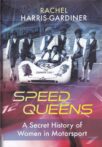
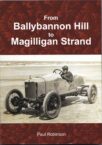
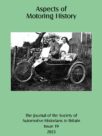
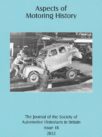
Leave a Comment